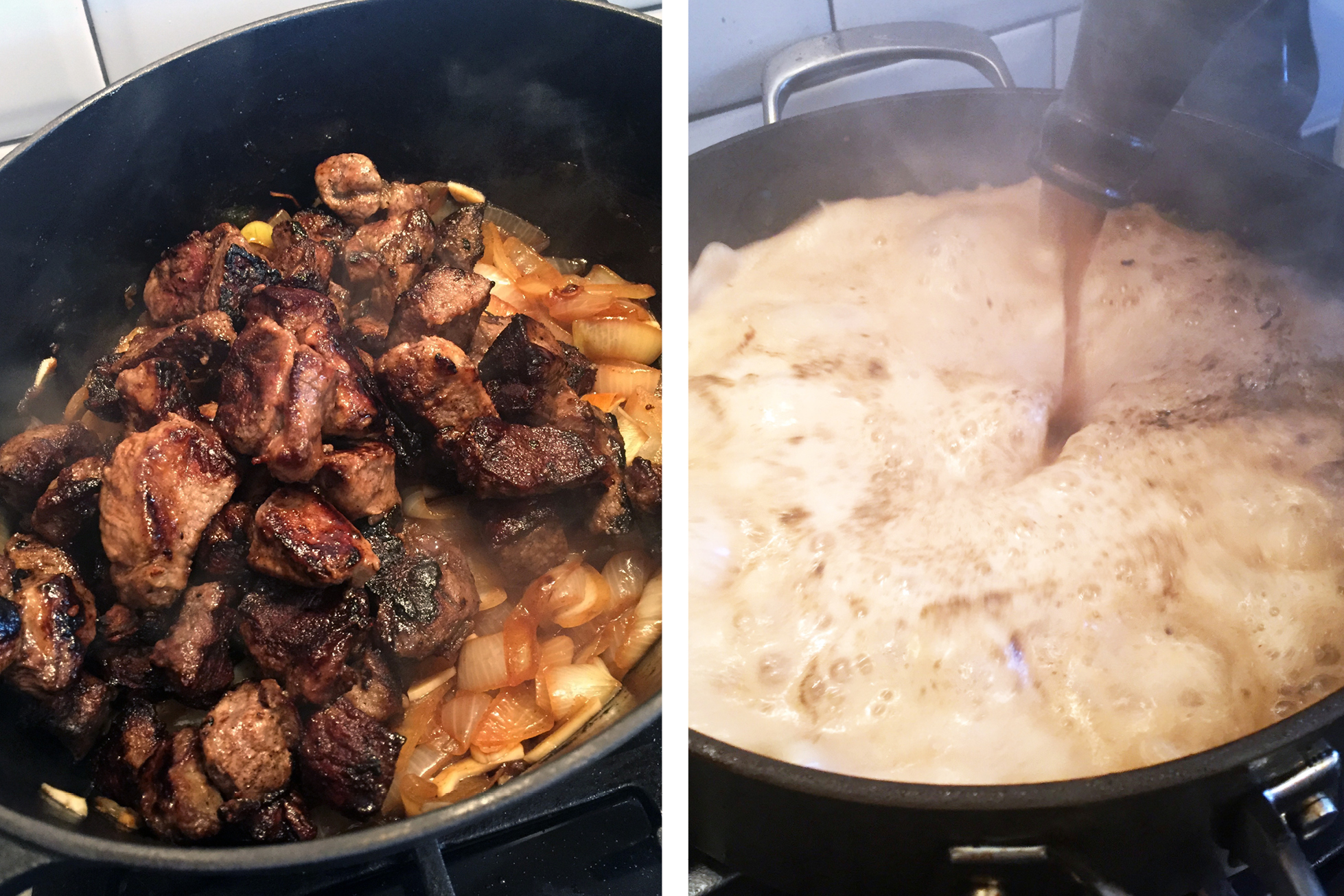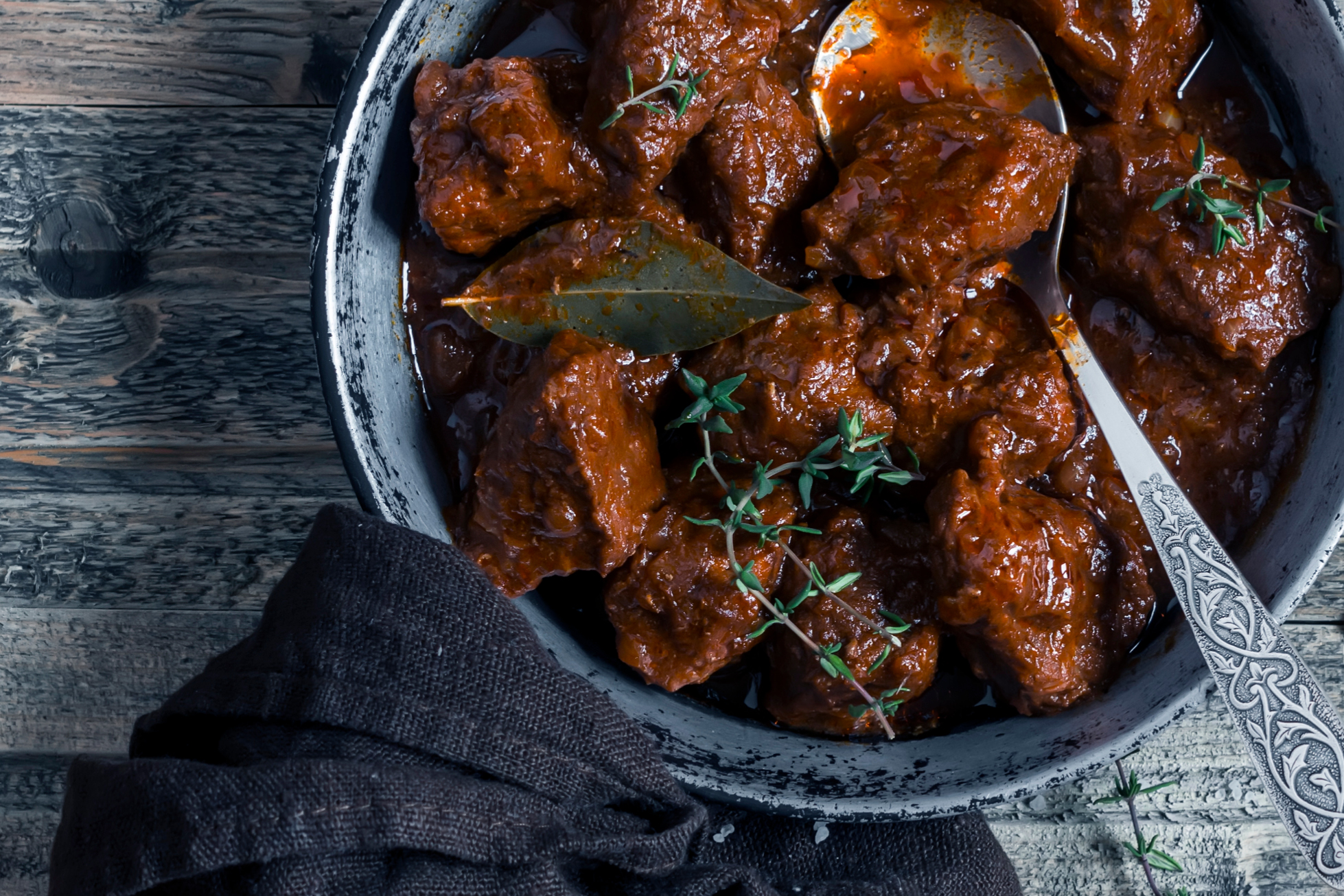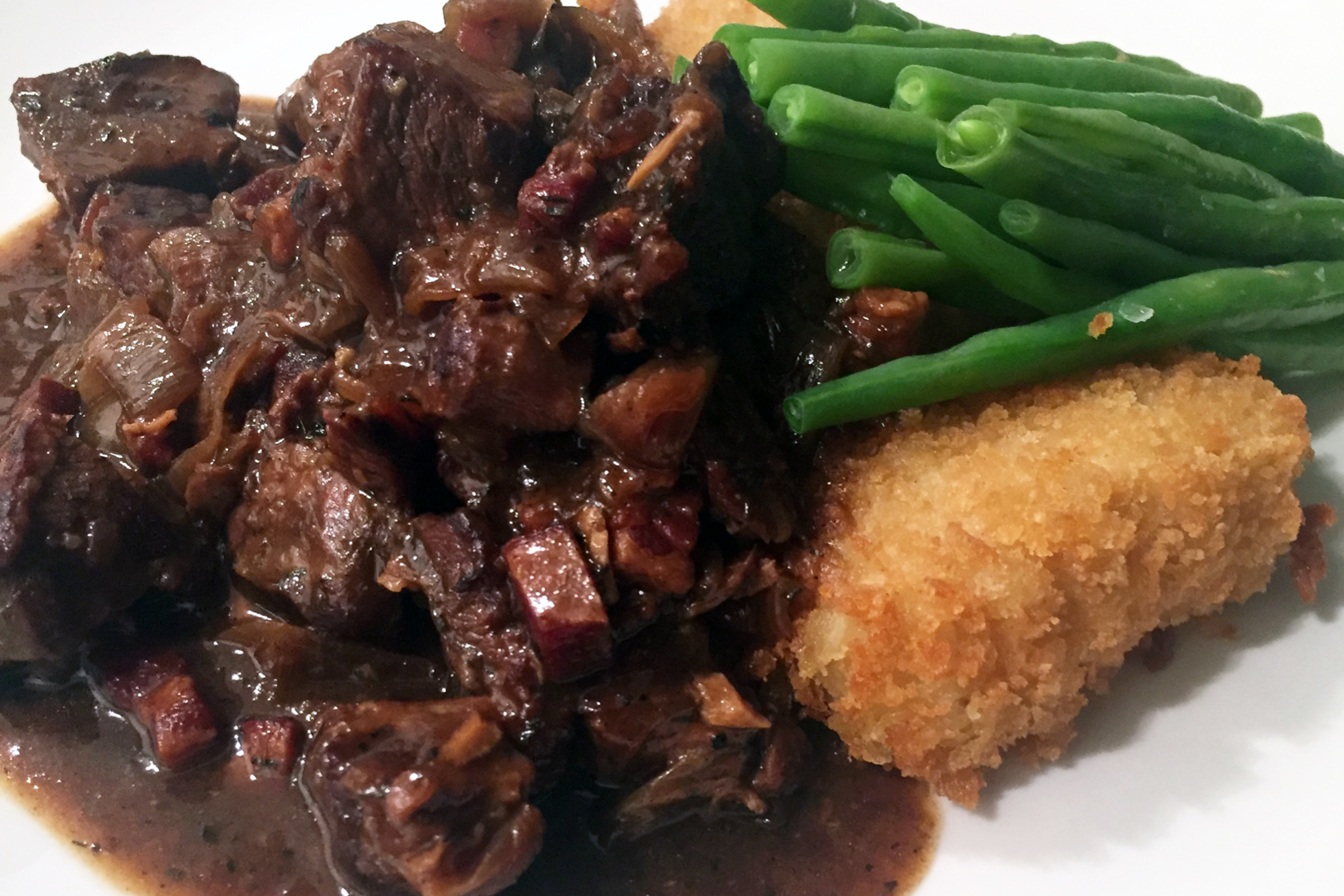One of the first recipes Ell remembers making was a Carbonnade of Beef (Carbonnade Flamande) stew, taken from a 1970’s Good Housekeeping magazine. It was a peculiar recipe for a budding young cook to attempt, a beer based beef stew for someone who wasn’t old enough to drink, but his vagarity and intrigue prevailed and the dish was created…clearly making an impression as 25 or so years on this dish is always a welcome favourite at home.
A quick search on the Internet (bless modern technology) will reveal dozens of ways to make this traditional Flemish dish; from recipes handed down through families or adapted as taste and ingredients have changed over the decades. A few ingredients are consistent, and an absolute must, across recipes:
- Dark brown beer; not too sweet, definitely Belgian and preferably a Trappist beer. Over and over the recipes we found recommended Chimay Blue. We initially tested it with some local English craft beers and ales but ultimately we agree with this recommendation and make our stew with Chimay Blue. Leffe Brun is also a good alternative.
- Dijon mustard.
- Thyme and bay leaves (dried or fresh).
After a couple of failed attempts we eventually came up with an amalgamation of recipes that we believe produces a perfect result. Thick and hearty, sweet and sour, this is a wonderful warming dish for a winter’s night.
To confuse matters even more, there seems to be two techniques that could have an overall affect on the final flavour; a traditional slightly sweeter recipe made with Flemish gingerbread (a kind of cake or bread, like the French pain d’épice, not the biscuits we think of), and the classic recipe that uses stale bread. We haven’t made the traditional recipe, as it’s been hard to find Flemish gingerbread in England, so this recipe is based on the classic.
Word of warning: this is the ultimate in slow cooking – it’s easy but everything takes time; from rendering the fat to caramelising the onions – it’s a good one for a lazy Sunday.
INGREDIENTS (serves 4):
- 1kg shin of beef (or stewing steak)
- 3 large onions, sliced thickly
- 4 large garlic cloves, sliced
- ½ tbsp flour
- 200g smoked bacon, cut into cubes (lardons)
- Dijon-style mustard
- 2 tbsps apple cider vinegar
- 3 bay leaves
- 2 tsps dried thyme
- 1 bottle (330ml) of dark Belgian beer
- 330ml of beef stock (from a cube is fine)
- 1 tbsp butter
- Salt and black pepper
- 5 slices of gingerbread or a couple of slices of stale bread (see note above)
- 1 tbsp of soft brown sugar
- Vegetable oil
RECIPE:
- Preheat fan oven to 160°C.
- Heat your casserole dish and add butter (resist the temptation to add too much butter as it will make the stew greasy).
- Add the lardons and over a medium-low heat lightly fry until the fat has been rendered and the lardons are golden and crispy – approx 15-20 minutes. Remove with a slotted spoon and put to one side.
- Place the onions in the rendered fat and cook at low heat for about 20 minutes, covered.
- Whilst the onions are cooking; pat the meat dry (or it won’t brown well). Season all over with flour, salt and pepper.
- After the 20 minutes, uncover the casserole dish and add the brown sugar, stir well and let this mixture cook for a further 5-10 minutes, until the onions are sweet and lightly caramelised.
- Add the garlic and cook for a further 2-3 minutes, uncovered.
- Deglaze the pan with the vinegar, mix well and allow the acid to burn off for a minute or two.
- Add a small amount of vegetable oil to a frying pan and heat on high; when the oil starts to shimmer and smoke slightly you’re ready to add the meat.
- Sear the meat in small batches on all sides for 4-5 minutes until nicely browned (too much meat in the pan at once will mean it takes longer to brown). Resist the temptation to fuss; it will actually stick to the bottom of the pan at first and then release naturally when seared. After a few minutes, gently shake the pan. If the meat releases then it’s ready to be flipped to another side. The colour on the meat will render a darker stew, which is what you want. (Depending how you’re doing for time; either put the browned meat to one side or just add it to the casserole dish, on top of the caramelised onions if they’re ready).
- When all the browned meat is in the casserole dish, open up the bottle of beer and pour it into the frying pan. Use a wooden spoon to deglaze the pan and scrape all the burnt bits of meat from the bottom whilst heating the beer. Pour the liquid into the casserole dish. Some recipes use two bottles of beer but we found the flavour too strong; diluting with the stock reduces the beer flavour and adds a layer of depth.

- Add the stock to the casserole dish (use the bear bottle to measure this out for ease).
- Add the bacon along with the bay leaves and thyme, mix well and bring to the boil. Don’t be tempted to over season with salt at this stage as the lardons will naturally add seasoning during cooking.
- Finally, spread a generous layer of Dijon mustard to the stale white bread. When the stew boils, reduce heat to low and carefully place the bread on the surface of the meat, mustard side down. The bread will slowly disintegrate when cooking and thicken the sauce.

- Cover and simmer for 2 hours in the oven at 160°C.
- After 2 hours, uncover, remove any non-dissolved bread slices, taste and seasoning if required. If it’s too sweet, add up to a tbsp of cider vinegar. Alternatively, if slightly salty you could add some sugar to balance flavours. It’s ready to serve.
Serving suggestions include buttered noodles, Belgian fries, potato croquettes, mashed or boiled potatoes, or just with a crusty baguette. It’s well worth the effort.
For more inspiring recipes click here.


